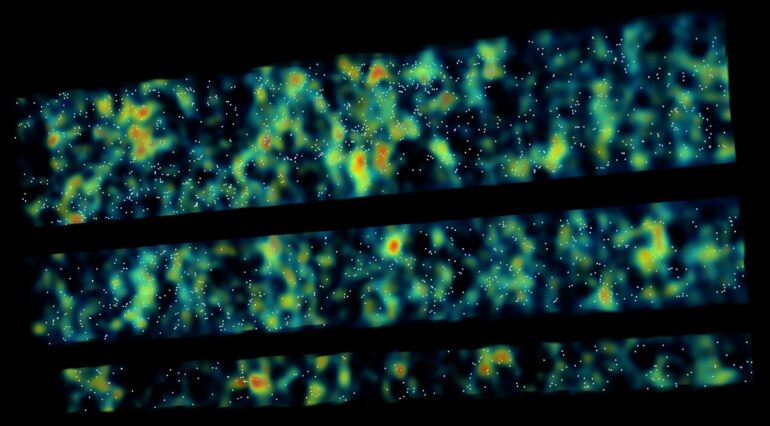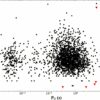The ancestors of some of the largest galaxy clusters have been hiding in plain sight. New work led by Carnegie’s Andrew Newman demonstrates a new technique for identifying the precursors of the most extreme galactic environments. The team’s findings are published in Nature.
Like all of us, galaxies are shaped and molded by their surroundings. To obtain a complete picture of the various physical influences on a galaxy’s lifecycle, it’s crucial to trace the emergence of properties caused by environmental factors as they arise.
“We’ve known for a long time that the colors, masses, and shapes of galaxies depend on their cosmic environment, but there’s a lot we don’t know about when and how those differences appeared,” Newman said.
Galaxy clusters are the most massive structures in the cosmos bound by their own gravity—sometimes comprising thousands of galaxies. The predecessors of these massive galactic environments, called protoclusters, are some of the earliest known structures in the cosmos and are perfect for studying the early stages of a galaxy’s lifecycle.
The Big Bang started the universe as a hot, murky soup of particles that was rapidly expanding. Some regions of the universe were denser than others and, over time, their gravity overcame the universe’s expansion, causing the material to collapse inward, forming clumps of structure that would eventually give birth to groups or clusters of galaxies.
But the team found that these protoclusters can be surprisingly hard to spot.
To date, most protoclusters have been found by searching the sky for regions that contain an unusually large number of distant galaxies. The research team—which included Carnegie’s Gwen Rudie, Guillermo Blanc, Mahdi Qezlou, Daniel Kelson, Alan Dressler, and Observatories Director John Mulchaey—deployed a new strategy for finding protoclusters.
The key to their method is the fact that the intergalactic hydrogen gas that’s part of the protocluster will absorb light passing through it, casting a kind of a shadow on the galaxies behind them, beyond the boundaries of the protocluster. By using the Magellan telescopes at Carnegie’s Las Campanas Observatory in Chile to observe such shadows, the team was able to identify the likely locations of protoclusters.
“We were very surprised to find so few galaxies inside the protoclusters that cast the strongest shadows, which is why these protoclusters were missed by earlier searches,” Newman said.
Their findings suggest that the overlooked protoclusters harbor unseen galaxies that must have evolved differently, making them dimmer and therefore harder to detect. The team plans to conduct further searches to locate these missing galaxies and determine their unusual properties.
“It’s interesting that the evolutionary paths of these galaxies diverged so early in the history of the universe, long before the clusters they now live in were assembled,” said Blanc.
Added Rudie: “One of the key lessons from this work is that as we map the distant universe, it’s important to bring together multiple perspectives; using just one technique can give a misleading picture.”
The researchers indicated that future protocluster searches will be able to test their findings against a larger population.
More information:
Andrew Newman, A population of ultraviolet-dim protoclusters detected in absorption, Nature (2022). DOI: 10.1038/s41586-022-04681-6. www.nature.com/articles/s41586-022-04681-6
Provided by
Carnegie Institution for Science
Citation:
Previously hidden protoclusters could reveal new details of galaxy evolution (2022, June 15)



